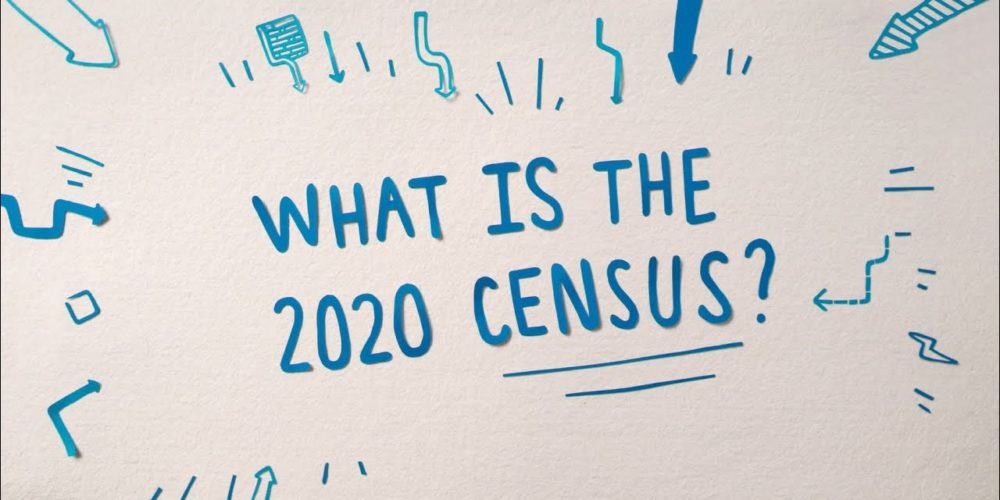
This blog is provided by Carrie Diamond, Training and Technical Assistance Specialist for the National Aging and Disability Transportation Center. If you have questions or comments, Carrie can be reached at cdiamond@easterseals.com
According to the U.S. Constitution, the population of the country must be counted every 10 years. The last census was completed in 2010 so that makes this year, 2020, the next count. People can respond to the census now to be counted. Census results are used in many ways.
The results are used to determine electoral maps and districts based on population increases or decreases. The U.S. Census Bureau provides states with population counts for redistricting. Representation matters and being counted to get fair representation is important
The census informs decisions about allocating hundreds of billions of dollars in federal funding allocated among over 100 programs to communities across the country—for hospitals, fire departments, public transportation, and other critical programs and services. A list to census-guided funding can be found at the George Washington Institute of Public Policy.
Business owners also rely on census numbers to determine the communities they will serve, where they may open or expand operations, and who they can recruit as employees based on population trends and growth projections. As a transit provider, you may be asked to help figure out how to get people there.
You have likely used census data to help with advocacy work or grant applications. You may be familiar with the census publication, American FactFinder. This service ended March 31,2020 and is being transitioned to and replaced with the data.census.gov website where you can explore current census data.
Impacts on Transportation
The census-derived data determines what fraction of Federal dollars is received by each state and area. This means that if a state or area does not receive funds due to an undercount, the money is distributed to all other states and areas.
The 2020 decennial census will be crucial in helping distribute some $1.5 trillion a year in federal funding for programs like Medicare, Medicaid, Older Americans Act and Community Development Block Grants.
Not only do census numbers determine in what state or area money is spent, but for Federal Transit Administration programs, census counts can determine what transit funding you can access. Populations of 50,000-200,000 can access FTA Section 5307 funds and those populations under 50,000 can access FTA Section 5311 funds. FTA Section 5310 funds are apportioned among the states by a formula which is based on the number of seniors and people with disabilities in each state according to the latest available U.S. Census data.
If your community is not fully counted in the census, it could miss out on transportation options people need to get to work and school. State and community leaders use census data to help determine when bus routes need to be changed or added to match up with where people live and work.
Many transportation providers also deliver or arrange transportation through health and human services programs like Non-Emergency Medical Transportation (NEMT). “Medicaid and six smaller Department of Health and Human Services programs rely on the annually updated Federal Medical Assistance Percentage (FMAP) based on each state’s per capita income (total income from tax and other records divided by total population from the census) to determine reimbursement and matching payment rates.” This means that the census can ultimately impact the reimbursement you receive for providing transportation through a Medicaid program.
Census-Guided Federal Spending: A Comprehensive Accounting Andrew Reamer, Research Professor George Washington Institute of Public Policy George Washington University
Some programs use Older Americans Act (OAA) funds to provide transportation. The National Association of Area Agencies on Aging, n4a estimates that the U.S. Administration on Aging distributed approximately $1.3 billion in OAA funding to states and Area Agency on Aging programs around the country in FY 2019—based on each state’s Census data.
Each of these funding sources has some component that is derived from census numbers. Therefore, getting your customers, your employees, your friends and neighbors to fill out the census is critical.
Steps you can take
Due to the pandemic, many census presentations and outreach events have been cancelled. Some people may not understand why the census is important, may have misconceptions or believe misinformation about filling out the census, lack broadband internet to fill it out online, don’t know they can do it by phone or by mail, or for whatever reason, they are not tuned in to this process. They may not realize the census is still taking place during the pandemic.
As you are in communication with your riders, add to those conversations, emails, letters or calls, information on filling out the census. Emphasize the importance of being counted and the safety of your information. All answers are kept confidential. By law, neither the U.S. Census Bureau, nor any worker can share a respondent’s personal information. Online information is encrypted, and if you do not want to fill it out online, you can choose to take the census over the phone or by mail. According to the fact sheet, the 2020 Census and Confidentiality, your information cannot be used by law enforcement or immigration enforcement agencies, or to determine your eligibility for government benefits.
Additional outreach materials can be found at the 2020 Census Partner page on the census.gov website. Here are two samples of outreach materials to get you started – a half-page handout or one-page flyer.
Why communicate about the census during the pandemic? This census will impact future planning for the next 10 years, a time when we are past this pandemic, when we can resume congregating with family and friends and enjoy things we have put on hold. Filling out the census is a hopeful act that people can do at home – online, by phone, or request through the mail. Along with physical distancing and staying safe at home, this is something else we can all do for the greater good.
Leave a Reply